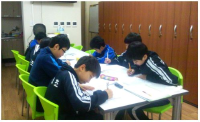
The purpose of this study was to verify the effect on elementary school students in the exercise start stage by performing a sport psychological skill training to improvement of psychological skill and life skill. Participants were eight elementary school boys volleyball player. The program consisted of psychological skills and life skills in educational counseling model of Visek et al(2009). It was conducted 40-50 minutes a session in total for 22 sessions. Data was collected through a psychological test, worksheet and participant observation, in-depth interviews. The collected data was analyzed to verify difference by paird t-test after pre-middle-post test and to extract meaningful data category. Quantity analysis showed that a result of sport psychological skill test proved a significant difference in willingness to overcome, confidence, concentration, anxiety regulation. Life skill test were no significant differences in all factors. However, the rise of scores was observed on result of the pre-middle paired t-test of life skill during season. Quality analysis showed possibility of goal setting, concentration on the routine, decrease of competitive anxiety, increase of positive thinking, self-understanding and understanding of others, promotion of communication among team members. This sport psychology skill training had a significant effect on the psychological skills of elementary players change. But it seems to be necessary life skills in a more through review of the information.


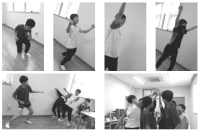

The research was a case study conducted in order to develop a new technique “YANG Hak Seon 2” for YHS athlete. A comparative kinematical three dimensional video analysis was performed with the use of high speed cameras. One successful trial and three of failure trials (T1: Falling backward while landing, T2: sitting reluctantly while landing, T3: Falling of sideways while landing). The result obtained from the study are as follows. Firstly when comparing the successful operation of the technique with failure trials, relatively higher landing angle was secured through increasing the thigh rotation and the body’s rotational velocity. Furthermore, despite increase in rotational velocity at twisting, stable landing was achieved through increasing the moment of inertia by spreading the left shoulder. Secondly, in case of failure trials while taking off the board, the thigh rotational angular velocity was comparatively less which ultimately affected the body position in the next phase of approach to the vault. Thus, due to the affected body position the athlete was not able to utilize the proper momentum of twist in positive direction Hence, it is considered that the velocity of center of mass might have also effected the operation not only the velocity while approaching the board.






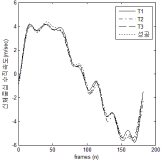



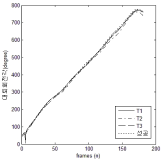

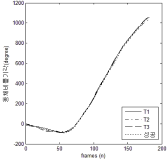


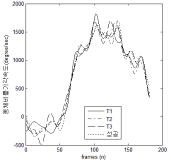

This study classified and analyzed groups of spectators of professional baseball through market segmentation and predicted the sports consumer behavior by using artificial neural networks model and logistic regression model. The results of hierarchical cluster analysis, K-means cluster analysis, cross-tabulation analysis and one-way ANOVA using PASW 18.0 and AMOS 18.0 suggest five clusters of consumer segments and by using Modeler 14.1, artificial neural networks model was made to predict the data. By using artificial neural networks model and logistic regression model, hit ratio was grasped about the spectator satisfaction and future consumption behavior. The results are as follow: The hit ratio were high in ‘cluster 5’ for artificial neural networks model(spectator satisfaction: 71.3%, future consumption behavior: 99.3%) and logistic regression(spectator satisfaction: 71.8%, future consumption behavior: 96.5%). Furthermore, cross-tabulation and one-way ANOVA was performed to understand the cluster's characteristic which had highest hit ratio about the spectator satisfaction and future consumption behavior. And through this marketing strategy was suggested.

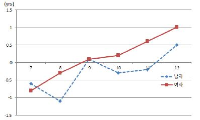
The aim of the study was to examine the tracking of body composition and physical fitness in boys and girls for 6 years. Thirty-seven boys and girls participated throughout the study. All measurements were performed annually. Body height, body weight, circumferences and skinfold thicknesses were measured and skeletal maturity was assessed. Body composition and bone mineral density were measured by DXA. Nine physical fitness tests were administered. Results of the study showed that there are significant interaction effects of time and group for body height(p<.01), waist circumference(p<.001), and skinfolds at triceps(p<.01), suprailiac(p<.01), thigh(p<.001) and medial calf(p<.01). All anthorpometric variables except skinfold thickness increased during the study period. Significant interaction effects of time and group were found for percent body fat(p<.05) and bone mineral density(p<.01). Percent body fat and fat tissue increased in boys from 7 to 11 years, then decreased in 12 years. Lean tissue(p<.001), bone mineral content(p<.001) and bone mineral density(p<.001) increased both in boys and girls throughout the study. There were significant interaction effect of time and group on sit and reach, standing long jump and sit-ups. In conclusion, percent body fat and fat tissue increased until 11 years, lean tissue and bone mineral density increased throughout the study both in boys and girls.


This study was to performed to the effect of 8-week endurance exercise influences on body weight, glucose tolerance and ER-stress in soleus of 16weeks Rats fed High-Fat diet. Rats were randomly assigned to 3 group; (1)Sprague-Dawley Control diet (SD-Con/n=4), (2)High-Fat diet Control (HF-Con/n=4), (3)High-Fat diet Exercise (HF-Exe/n=4). Exercise group ran on the treadmill for 30min/day at the level of 21m/min for 5days/week during 8weeks. Results showed that body weight and glucose tolerance of the HF-Con group was remarkably increased(p<.05) compared to other groups. However, HF-Exe group significantly decreased body weight and glucose tolerance compared to HF-Con group. Moreover, level of GRP78, ATF6, PERK and IER1⍺, which are main proteins of ER-stress were significantly increased in HF-Con group higher than other group, whereas HF-Exe group significantly decreased the expression of GRP78, ATF6, PERK and IER1⍺. Taken together, these finding suggested that the reduction of the body weight, glucose tolerance and unfolded protein response by treadmill exercise may represent a positive adaptation protecting against high-fat diet-induced ER stress.






PURPOSE This study aimed to investigate the effects of an 8-week unstable surface Pilates training on physical fitness, abdominal muscle thickness, lumbar isokinetic muscle function, and pain in women aged 30–40 who are living a sedentary lifestyle and experiencing nonspecific low back pain. METHODS The training group (TR, n = 15) performed Pilates using small apparatuses on an unstable surface for 50 min/session, three sessions per week for 8 weeks, whereas the control group (n = 13) maintained their usual living pattern during the same intervention period. RESULTS 1) The body weight, body mass index, percent body fat, and fat mass decreased significantly in the TR, 2) whereas the hand grip strength, trunk extension, sit-andreach, and modified Schober test scores improved significantly. 3) The thickness of the external oblique, internal oblique, and transversus abdominis increased significantly in the TR. 4) Lumbar isokinetic flexor strength per body weight increased significantly in the TR. The endurance and endurance per body weight of the lumbar isokinetic extensor and lumbar isokinetic flexor also significantly increased in the TR. 5) The Korean Oswestry disability index (KODI) and the visual analog scale (VAS) score decreased significantly in the TR. 6) Significant negative correlations were found between the change rates in the KODI and nondominant hand grip strength, external oblique thickness, transversus abdominis thickness, and lumbar isokinetic extensor endurance. A significant negative correlation was found between the change rates in the VAS score and external oblique thickness. CONCLUSIONS The results revealed that the 8-week unstable surface Pilates training was beneficial in improving physical fitness, abdominal muscle thickness, lumbar isokinetic muscle function, disabilityindex, and pain levels in women aged 30–40 years who were having a sedentary lifestyle and experiencing nonspecific low back pain.
PURPOSE This study examined the biomechanical differences in running shoes with two midsole materials, ethylene-vinyl acetate (EVA) and polyether block amide (PEBA), and carbon fiber plate insertion. METHODS Ten recreational runners participated in the study and performed running trials on a 12m runway at a controlled speed of 3.89 m/s ± 5%. Biomechanical data were obtained for time-continuous variables of the metatarsophalangeal (MTP) joint (angle, moment, and power), as well as for discrete variables (push-off time, peak vertical impact force, peak anterior propulsion force, and timing of joint power transition). Data were analyzed using statistical parametric mapping for continuous data and the Wilcoxon signed-rank test for discrete variables (α = .05). RESULTS Compared with no-plate conditions, the EVA sole with plate significantly reduced push-off time, MTP joint range of motion, positive joint power, and peak anterior propulsion force, with an earlier timing of joint power transition (p < .05). In contrast, the PEBA sole with plate decreased MTP joint range of motion but increased plantar flexion moment, negative joint power, and push-off time (p < .05). Furthermore, under plate-inserted conditions, PEBA significantly increased plantar flexion moment, negative joint power, and push-off time, as well as exhibited a delayed timing of joint power transition compared with EVA (p < .05). CONCLUSIONS The interaction between midsole material and plate insertion causes complex variations in MTP joint energy management. Specifically, EVA shoes with a plate may facilitate rapid roll-off and promote swift turnover, thereby enhancing acceleration. In contrast, PEBA shoes with a plate may promote prolonged energy absorption, which could potentially reduce joint fatigue during long-distance running.
PURPOSE This study compares the effects of video group and metaverse group counseling for student athletes to analyze differences in immersion, sychological skills learning effects, and each approach’s participation experiences. METHODS Twenty-four high school archery students were divided into three groups: a metaverse experimental, a video comparison, and a control group. For the experimental and comparative groups, 10 non-face-to-face psychological skills training sessions were conducted. With the control group, results were compared and analyzed by measuring psychological skills and social presence pre- and post-training. Additionally, analysis of the qualitative effects of psychological skills training was performed. RESULTS The psychological skill test’s quantitative analysis of the video comparison group showed a more significant effect in anxiety control factors than the metaverse experimental and the control groups. Moreover, in the social presence test, both the metaverse and the video groups showed significant differences in social presence and satisfaction; furthermore, Scheff post-verification results showed that the two environments’ satisfaction was significantly higher than that of the control group. Qualitative analysis confirmed that the metaverse and video groups experienced psychological, technical, and relational changes in common. CONCLUSIONS Although the metaverse group using avatars was likely to increase immersion, both the video and the metaverse groups were effective in psychological skills training, suggesting that the training effect may vary depending on the non- face-to-face environment’s stability and participation method. Future studies should examine effects of applying the metaverse platform to sports psychological skills training and various psychological support activities by solving the metaverse environment’s technical limitations.
PURPOSE This study aimed to characterize the kinematic variables of stair climbing in adult women by analyzing the effects of varying heel heights on their climbing behavior. METHODS A total of 24 adult women (age: 22.08±1.28years; height: 160.43±4.30cm; weight: 54.10±6.39kg) participated in this study. All subjects wore the same type of high heels with heights of 1cm, 5cm, and 7cm while performing stair climbing on stairs measuring 18cm in height. Ten infrared cameras (200Hz) and ground reaction force sensors (1000Hz) were set up on the stairs, along with an 8-channel electromyography system (1000Hz) to analyze the maximum moments at each joint and the muscle activation during stair climbing. Data were analyzed using IBM SPSS Statistics version 27.0 (IBM., USA). All variables underwent the Shapiro–Wilk normality test, with repeated measure analysis of variance or the Friedman test applied based on the results. Post hoc tests were conducted using the LSD test or Wilcoxon signed-rank test. RESULTS Our study found four key findings. First, a significant decrease in maximum dorsiflexion, plantarflexion, inversion, and adduction moments of the ankle joint was observed with increasing heel height. Second, the maximum extension, adduction, and external rotation moments of the knee joint significantly decreased as heel height increased, while the maximum abduction and internal rotation moments significantly increased. Third, the maximum flexion, extension, and abduction moments of the hip joint significantly increased with higher heel heights. Fourth, muscle activity of the rectus femoris, vastus medialis, vastus lateralis, semitendinosus, and gastrocnemius decreased with increasing heel height compared to walking; however, muscle activity in the tensor fasciae latae increased. CONCLUSIONS The results of this study suggest that as heel height increases, the risk of injury may rise due to limited ankle use and increased moments in the knee and hip joints, potentially leading to muscle strength imbalances in adult women, particularly through the overuse of specific muscles.
PURPOSE This study analyzed the difference in lower extremity joint angle and shock absorption patterns at the point of maximum ground reaction force during single-leg drop landing with or without anterior cruciate ligament reconstruction (ACLR). METHODS Forty adult males were recruited for this study, with 19 in the ACLR group (age: 20.52±1.43years, height: 179.26±5.18cm, weight: 74.91±6.29kg) and 21 in the control group (age: 21.42±1.61years, height: 174.97±6.83cm, weight: 69.27±7.56kg). Participants performed single-leg landings on a 30cm tall box. An independent sample t-test was used to analyze the difference in kinetics variables at the point of maximum ground reaction force upon landing, with significance set at p=0.05. RESULTS The lower limb joint angle showed significant differences in hip flexion, hip abduction, knee flexion, and knee valgus (p<0.05) between groups. There was no significant difference between the groups in terms of the results of kinetics variables during single-leg landing (maximum ground reaction force, lower extremity stiffness, and shock absorption time). CONCLUSIONS The ACLR group showed a clear difference in kinematics compared to the control group, but no significant difference in kinetic results was found. The two groups compensated for the same impact with different movements, though movements in the ACLR group may increase the risk of ACL re-injury. Those with ACLR should strive to reduce the risk of re-injury by training to use correct movements.